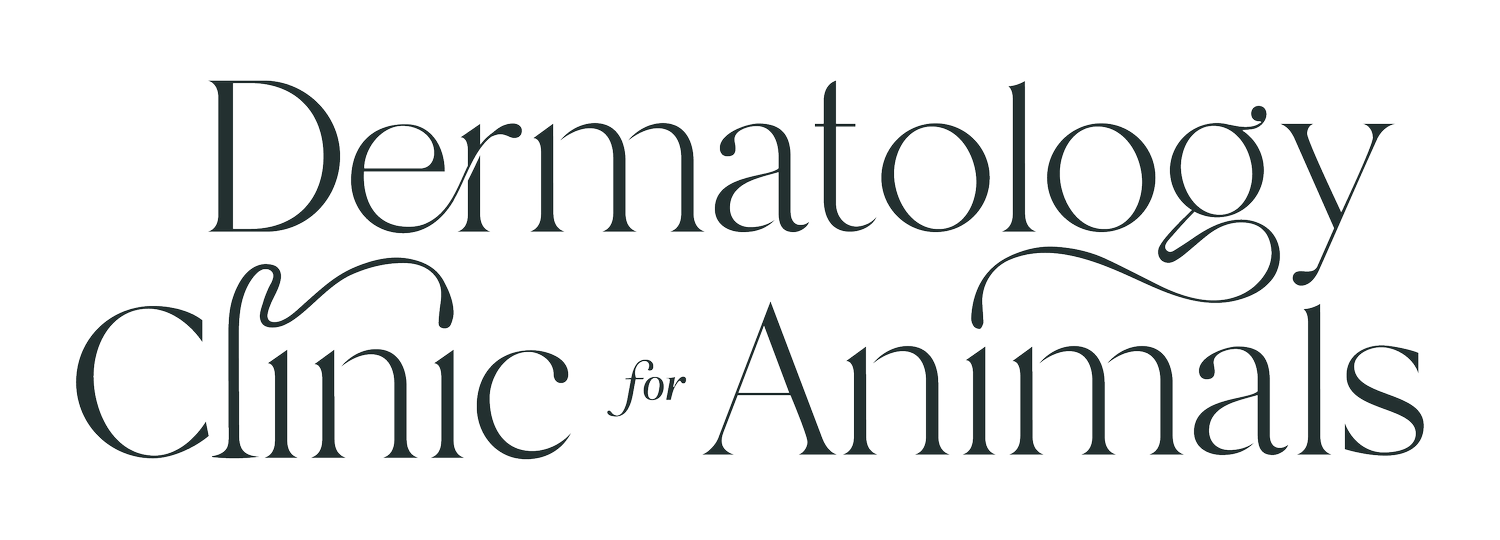Pemphigus Foliaceus
-
Pemphigus foliaceus is an autoimmune disease whereby antibodies produced by an animal’s own immune system attack the bridges that hold skin cells together. It is the most common autoimmune disease diagnosed in dogs and cats.
-
Dogs and cats of any age or gender can be affected. In dogs, Akitas, Chow Chows, Doberman Pinschers, Dachshunds, and Newfoundlands may be predisposed. No breed predilections exist with cats. Three forms of Pemphigus foliaceus exist in the dog. The first and most common is the spontaneous form which develops in dogs with no history of skin disease or drug history. The second form of Pemphigus foliaceus is initiated via a drug reaction. The third form occurs in dogs with a history of chronic skin disease (e.g. allergies).
-
The primary lesion of Pemphigus foliaceus is a pustule. These lesions typically begin along the nasal bridge, around the eyes, and ear pinnae. It is typical for the lesions to spread and occur along the trunk, feet, clawbeds, groin, and footpads. In cats, the nail beds and nipples can also be commonly affected. In most cases, the pustules form and rupture very quickly, so that all that there is left to observe are areas of hair loss, yellow-brown dried crusts, redness, and scale. Severely affected animals may become anorexic, depressed, and have a fever. The disease itself often displays a waxing/waning course.
-
See Clinical Signs.
-
The diagnosis of Pemphigus foliaceus is made by clinical signs, cytology, and biopsy. Other diseases that can appear similar to Pemphigus foliaceus include infection (bacterial, parasitic, fungal), seborrheic skin disease, and varying forms of lupus. Skin scrapes would be performed to rule out external parasites via microscopic analysis. A fungal culture would be done to rule out ringworm (a type of common fungus). Samples of debris from intact pustules or crusts can allow for a diagnosis of Pemphigus foliaceus. In some cases, multiple skin biopsies are required to confirm the diagnosis of Pemphigu foliaceus.
-
The prognosis is fair to good, but lifelong therapy is usually required to maintain remission. Cases of Pemphigus foliaceus that are induced by a drug reaction, are the most likely to be cured. Regular monitoring of clinical signs, hemograms, serum biochemistry profiles, urinalyses, and urine cultures with treatment adjustments as needed are essential.
-
Localized cases of Pemphigus foliaceus can be treated with varying strengths of topical steroids. The mainstay of therapy for more generalized cases in both dogs and cats is oral glucocorticoids (e.g. Prednisone). In order to minimize the potential side effects of glucocorticoids (e.g. weight gain, excessive drinking, and urinating, liver enlargement), nonsteroidal immunosuppressive drugs are added to the regimen. In dogs, azathioprine and/or cyclosporine can be utilized, while in cats leukeran and/or cyclosporine are the most popular supportive drugs. Other nonsteroidal immunosuppressive drugs include gold salts (dogs and cats) and tetracycline/niacinamide (dogs). Affected animals are started at higher dosages initially until remission is achieved (4-12 weeks), and then are tapered to the lowest possible dosages that maintain remission.




